A lawn is arguably the most demanding feature in your landscape, requiring continual attention throughout the growing season to look its best. Of all the plants, trees, and shrubs in your landscape, the grass is the one that needs constant upkeep. However, if your lawn looks pale despite all of your efforts, thatch is most likely to blame!
Thatch is a matted covering of grass stems, stolons, rhizomes, roots, fallen tree leaves, twigs, and other organic materials that accumulate over time on the surface of a lawn. It is a natural process and usually not a reason for concern. That is, however, unless that thatch layer on your lawn does not become too thick.

However, if the thatch is thicker than half an inch, it can cause problems. Imagine thatch as a sheet of plastic wrapped around your lawn. Thick thatch prevents nutrients, water, and air from reaching the grassroots. In addition, thatch can trap pesticides and prevent them from absorbing into the soil.
It can even house harmful fungi and pest insects that spread disease. Additionally, as thatch accumulates over the lawn, grass roots begin to grow into the thatch layer rather than the soil. Here the roots are more vulnerable to environmental stresses such as drought, heat, and cold.
However, dethatching is not always necessary, and understanding how to dethatch your grass is essential. Dethatching, when done correctly, aids in reviving the health of your grass. But, if done wrong or at the wrong time, it can do more harm than good!
What Causes Thatch To Build Up In A Lawn?
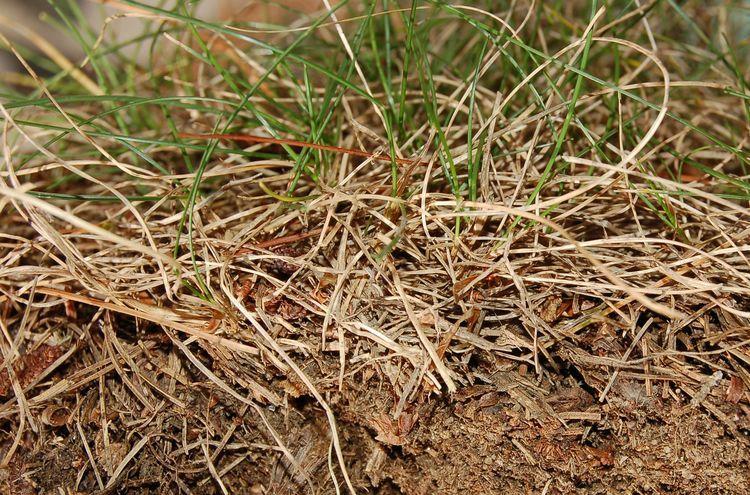
Excessively thick thatch can have a variety of causes. Usually, the most common reasons are inadequate soil aeration, an abundance of water (which reduces the amount of oxygen in the soil), and an excess of nitrogen (which promotes excessive growth).
In addition, the overuse of insecticides, which can kill earthworms and the beneficial soil microbes responsible for decomposing the organic matter, can also lead to excessive thatch build-up on a lawn. Let’s talk about it in a bit more detail.
Soils Devoid Of Beneficial Microbes
If the amount of dead organic matter produced outpaces the microorganisms’ capacity to decompose it, thatch will build up on a lawn. Thatch accumulation is usually a sign of “dead soils.”. Such soils are devoid of beneficial microbial activity.
In addition, thatch can also build up on a lawn when there is inadequate soil aeration and poor drainage. Thatch build-up in lawns is also exacerbated by improper lawn watering techniques and excessive use of pesticides and fertilizers.
Improper Lawn Care Cultural Practices
In addition to the lack of beneficial soil microbes, the following practices could also result in or increase the formation of thatch over a lawn:
- Watering the lawn frequently and shallowly.
- Overusing salt-based nitrogen fertilizers which can kill soil microbes.
- Mowing the lawn improperly (removing more than one-third of the grass blades).
- Lack of aeration, especially in compacted soils.
How To Tell If I Have A Thatch Problem?
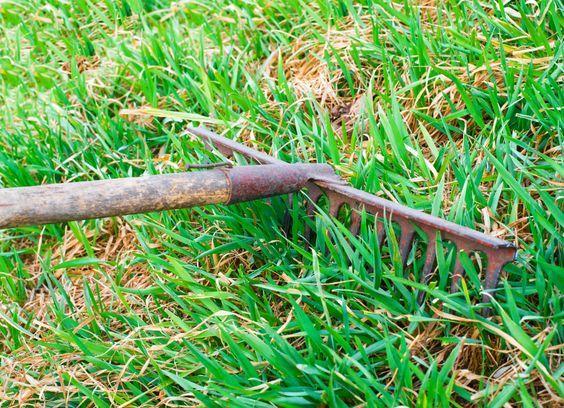
There are several techniques to determine whether your lawn has a thatch problem. The simplest and easiest method is to see if your lawn is green on top but brown underneath.
Usually, the best time to check this is right after you have mowed your lawn and just removed the top layer of green growth. If the lawn appears dead or brown after that, there is a thatch issue that needs immediate fixing.
Another way to detect thatch issues is to walk over the lawn simply; if it seems spongy, thatch may be the cause. However, if you are still unsure, cut a few little plugs from the grass with a spade or knife and measure the thatch.
Thatch is identified as a brown, spongy layer of material between the grass and the earth. If this layer is thicker than half an inch, your lawn is in need of dethatching.
Signs Your Lawn Needs Dethatching
You are not restricted to relying just on a dethatching test to see if you need to dethatch your lawn or not.
If your lawn is in need of a thorough dethatching, there are a few tell-tale signs that it will express to make the problem known to you.
- The grass blades become weak and fragile.
- The ground is springy and spongy to touch.
- You are frequently being attacked by lawn fungi.
- The grass is losing its lush green color.
- Weeds are continuously invading your lawn.
- The grass is thinning, and bare spots are appearing on the lawn.
- The grass is becoming more sensitive to temperature extremes.
- There is an insect problem in your grass.
When To Dethatch Your Lawn
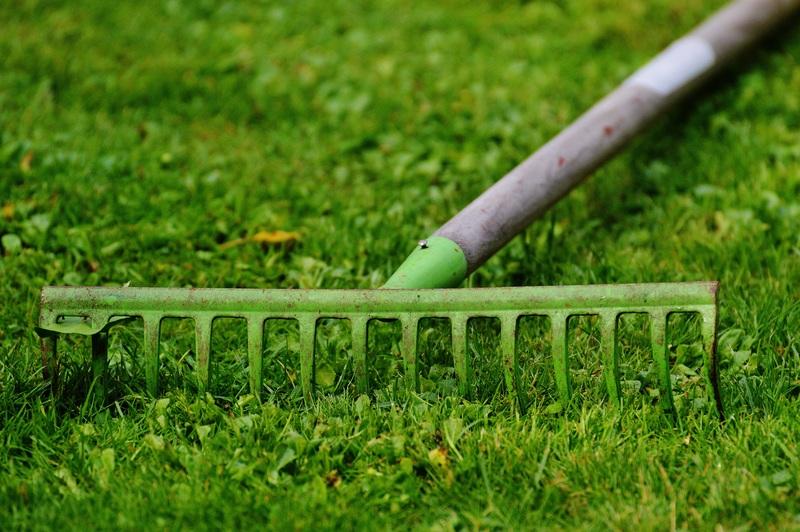
Unlike mowing, dethatching is not a regular lawn chore. Instead, depending on the type of grass and the growth conditions, you might only need to dethatch your lawn every two to three years.
In addition, the frequency with which you need to dethatch your lawn also depends on the grass type.
Fast-growing grasses, such as Kentucky bluegrass and St. Augustine grass, are more prone to thatch than other types, particularly when grown in heavy clay or compacted soil.
In addition to frequency, grass type also determines the timing of dethatching.
Dethatching Cool-Season Grasses
If you have cool-season grass such as Creeping fescue or Kentucky bluegrass in your yard, you should dethatch your lawn in the early spring or late summer to early fall.
These grasses are usually planted in the northern areas of the United States.
Dethatching Warm-Season Grasses
For warm-season grasses, which are usually grown in the southern areas of the United States, you should dethatch your lawn in the late spring or early summer.
Another way you can tell whether or not it is time to dethatch your lawn is by doing a quick poking test. Try poking your finger into the lawn soil; if it feels stiff, you need to dethatch.
RELATED: Dethatching St. Augustine Grass: A Complete Step By Step Guide
How Do I Dethatch My Lawn?

There are various techniques for dethatching a lawn. Aerating is usually done for lawns with mild thatch levels.
On the other hand, the best option for large lawns with severe thatch issues is a vertical mower. It cuts through thatch like a heavy-duty power mower but uses a set of rotating vertical knives instead.
Also, remember that dethatching often generates a significant amount of waste that needs to be removed from the lawn.
Compost the waste if your lawn has not been treated with pesticides or herbicides and the waste is weed-free and y. Alternatively, see if your city offers a yard waste composting service.
Nonetheless, here are a few tips & tricks to get the best out of dethatching your lawn.
Use The Right Tools
The two main factors determining the best dethatching tool for a job are the size of your yard and the amount of work you are willing to put into dethatching your lawn.
The majority of lawn and garden retailers carry manual thatching rakes, which are preferred for smaller lawns, light thatch, and general thatch care.
Power rakes are a go-to for homeowners with large yards or persistent thatch concerns when the grass can sustain severe raking.
The most effective heavy hitters for thick thatch layers and large yards are vertical mowers. However, due to their infrequent use, renting a vertical mower is usually better than buying it.
Lawn Dethatching Steps
Here is how to dethatch your lawn correctly:
- First, cut the grass and make sure that it is shorter than 2 inches.
- Rake the lawn using the appropriate tool. Once again:
- Use a rake to manually dethatch lawns that are small and have little thatch.
- Use power rakes for large home lawns with a thick layer of thatch.
- Use a vertical mower to dethatch large lawns with persistent thatch problems.
- Apply starter fertilizer and regularly water your lawn to speed up grass recovery.
- If the turf is too thin, overseed it with a quality seed mix.
- Lightly rake the seed into the soil using a rake to ensure good seed-to-soil contact.
- Topdress by spreading 1/4″ of organic compost on the lawn with a leaf rake.
- When the new grass reaches a height of 3-3.5 inches, mow it high.
Professional Lawn Dethatching Services

Sometimes it’s best for you and the health of your grass to have a professional lawn dethatching service visit your house.
A service provider is an excellent choice if you need help with large thatch removal projects, thick thatch patches, or you just don’t have the time to dethatch your lawn.
For one to two hours of work, you can typically expect to pay anywhere from $100 (for a smaller lawn) to $700 (for a large lawn).
Professional lawn care companies have seasoned professionals who know how to carefully rake and remove thatch from a yard.
You won’t need to buy new tools because they already have all they need. In addition, experts are aware of which instruments the grass can withstand. This is far better than a rookie do-it-yourself dethatching where you might unintentionally remove both thatch and healthy turf.
Not Every Professional Dethatching Service is “Professional”
However, keep in mind that not all lawn care companies and dethatching services are equal. Find a reliable company with thatch removal experience.
Ask them about the tools they use and their reasons for doing so. If a vertical mower is their preferred option for all jobs, even for small thatch patches, you need to hang the phone!
What To Do After Dethatching
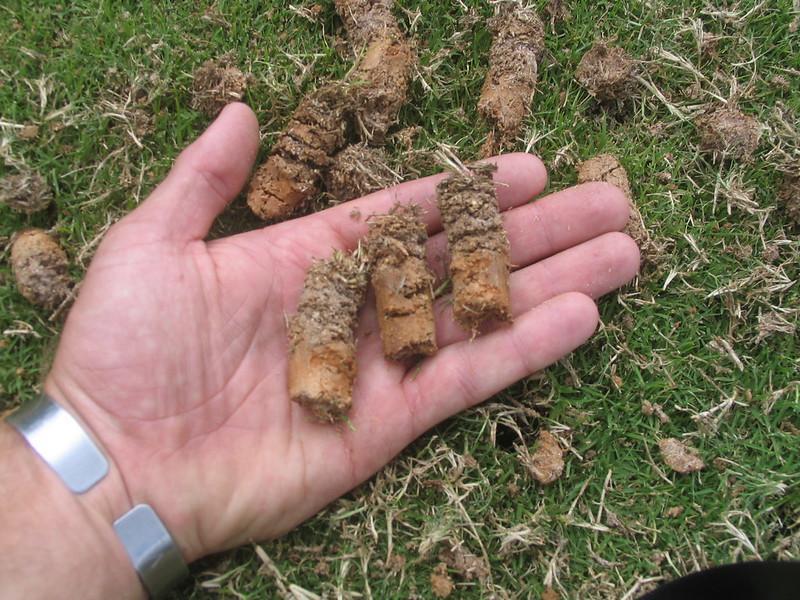
If necessary, you can immediately aerate the soil after dethatching once the debris has been removed.
It will increase the amount of air, water and nutrients reaching the grass and relieve soil compaction issues. You can use a core aerator or a hollow tine to get this done.
The aim is to go as deep as possible and make sure that you do it when the soil is moist, as dry soil will be harder to dig in.
Then, following aeration, you can fertilize the grass immediately. Depending on the lawn, turf can be aerated every two to three years.
Dethatching Vs. Aeration
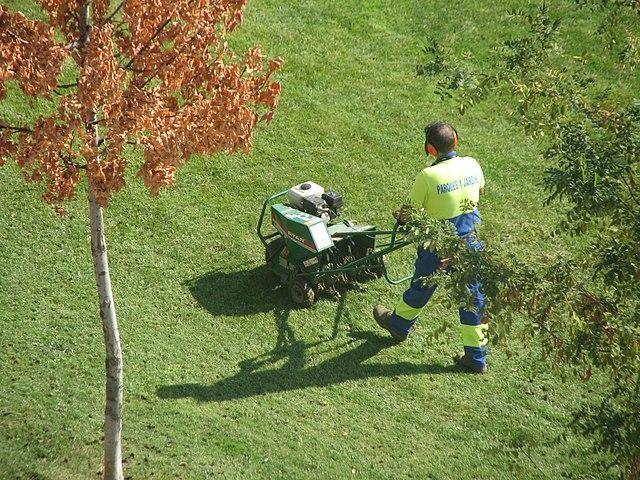
Dethatching and aerating a lawn are frequently confused with one another because both procedures help the grass look better by providing the nutrients it needs to thrive.
However, they both are different things and should not be confused with each other.
A dethatcher uses a raking tool to remove layers of organic waste from the area between the soil and the base of the grass.
Dethatching thus eliminates the barrier that blocks water, air, and nutrients from reaching the grass roots.
On the other hand, aerating involves making holes in the grass and removing plugs of soil and turf, which are then on the lawn to decompose.
These holes produce tiny pathways that allow nutrients, air, and water to penetrate deeper into the soil.
RELATED: How To Properly Aerate Bermuda Grass Lawn | Best Time To Aerate Your Bermuda Lawn
Conclusion | Lawn Dethatching
While dethatching may not be a yearly task, you should always inspect your grass for thatch each year. You can postpone dethatching if there is less than half an inch of thatch and you aren’t noticing any symptoms of your grass being in distress.
If you’re wondering when to dethatch a grass, the answer is really, as needed. As a general rule, it should be completed right before the grass enters its active growth period.
Always use the proper tools to prevent overstressing your grass, and follow up dethatching your lawn with core aeration when needed.
Frequently Asked Questions (FAQs)
Is dethatching grass necessary?
Because thatch accumulates over time, it is not necessary to dethatch your lawn every year. However, it is usually best to quickly inspect your lawn each year to see how much thatch has accumulated.
Also, keep in mind that not all lawns require dethatching, and knowing how to dethatch your lawn is critical to its future.
Is dethatching a good idea?
Dethatching, when done correctly, aids in reviving the health of your grass and preserving its beauty for years to come. Dethatching facilitates air, water, and nutrient circulation deep within the roots and boosts grass growth.
Fertilizer will also be more effective after dethatching since it will distribute more evenly across and integrate better with the soil.
Can dethatching hurt your lawn?
Although dethatching is a harsh process, the long-term advantages far outweigh the short-term negatives.
However, dethatching needs to be done correctly. Dethatching your grass too soon can harm it since it damages the new crowns and puts the grass under more stress.
Additionally, you should never dethatch your lawn when it is dormant, as it can cause irreparable damage to your lawn.
Is it better to dethatch or aerate?
That depends on the condition of your lawn. For soil compaction issues, aeration is best, and dethatching is best for removing organic debris.
However, if both are needed, dethatch your lawn first. This way, you’ll not only remove excess debris from your lawn but also encourage the establishment of healthy roots.
What happens if you dethatch your lawn?
The accumulation of thatch is detrimental to lawns. It is difficult for the water to penetrate a thick layer of thatch, and water tends to flow off rather than being absorbed.
Also, thatch can provide a haven for pests and lawn diseases, and it may also cause the grass to begin growing in the thatch layer rather than in the soil. This results in shallow root systems, which decrease the resilience of the grass.
Sources For Further Reading
How to control thatch on your lawn? – University of Minnesota Extension Service
Thatch Management in Lawns – Oklahoma State University Extension Service
Managing Thatch in Home Lawns – University of Illinois Extension Extension Service







